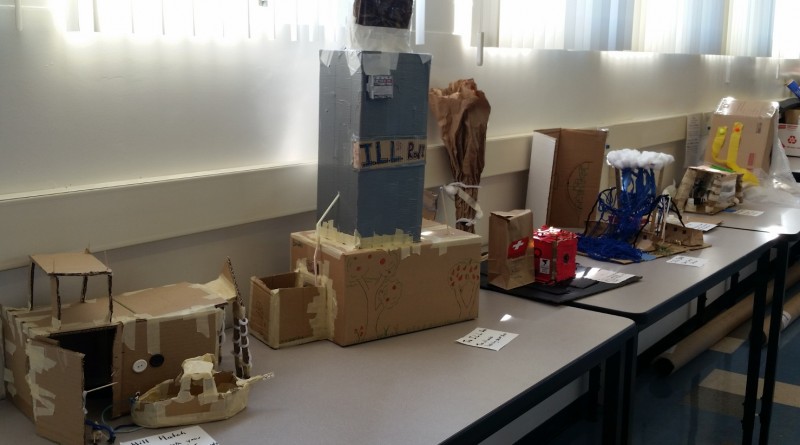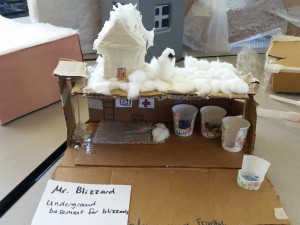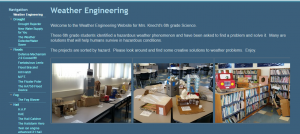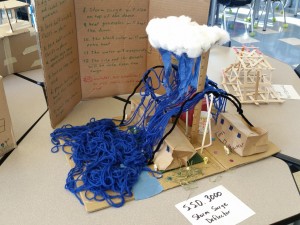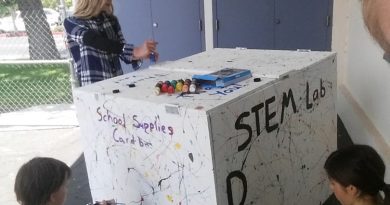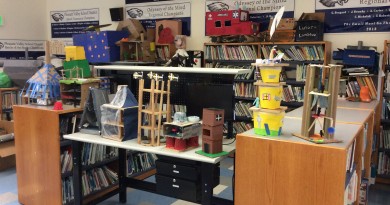Weather Engineering
Objective:
Design something to solve a problem related to hazardous weather
NGSS Standards:
MS-ESS2-5 Weather: Collect data to provide evidence for how the motions and complex interactions of air masses results in changes in weather conditions.
MS-ETS1-1 Define a problem: Define the criteria and constraints of a design problem with sufficient precision to ensure a successful solution, taking into account relevant scientific principles and potential impacts on people and the natural environment that may limit possible solutions.
Overview of Lesson:
This lesson was the culminating activity for our unit on weather. Students had previously completed activities about the atmospheric conditions needed to create various types of severe weather. For this activity, students had to choose one type of severe weather and design a solution that would protect human interests during that type of weather. Students were expected to demonstrate an understanding of the weather (what is dangerous about a hurricane?) and to create an innovative solution to address those hazards. Students worked on this at their own pace over the course of three weeks. To collect the work done by all students, the projects were displayed on a website for parents to view. Site link: Weather Engineering
Areas that students needed help on:
Most students were able to approach and attack this problem without significant difficulty. My role as a teacher became to ensure that their content knowledge was communicated through their project. Some students built massive structures either in person or virtually, but had trouble communicating and justifying the purpose behind their creative decisions. Another concern was scale, as some students designed walls to protect cities without considering the real life dimensions of their idea. I encouraged these sort of out of the box ideas, but would need to work more at helping the students refine their wild ideas to something connected to reality.
Assessment/Scoring:
Model was assessed based on thought, effort, viability, creativity, execution.
Webpage was assessed based on content, persuasiveness, layout, mechanics.
Scores for each aspect were standards based- exceeds expectations, proficient, partial, or below expectations.
Student samples:
Student work was all collected and displayed on a class website for this assignment, sorted by weather hazard: Weather Engineering
Conclusions/Reflections for the Future:
This was the first full engineering activity for the students this year. Overall they were enthusiastic about this project and approached the problems with open minds. For me this was a great activity to demonstrate the full TPACK Venn Diagram with the intersection of content, technology, and pedagogy. Sample Diagram is available here: goo.gl/mDT1Ps. The students were expected to use the technology to demonstrate their understanding of the content and to communicate their idea to a broad audience. As a digital educator, my pedagogy enabled me to oversee the student work using digital tools as well as in person communication during class time. Being able to distribute instructions and resources online to the students is a major time saver during class, allowing me to spend more time discussing projects with the students and being involved during their entire creative process. This is a project I would repeat in the future because it is a strong practical introduction to a DOK 4 engineering application.
